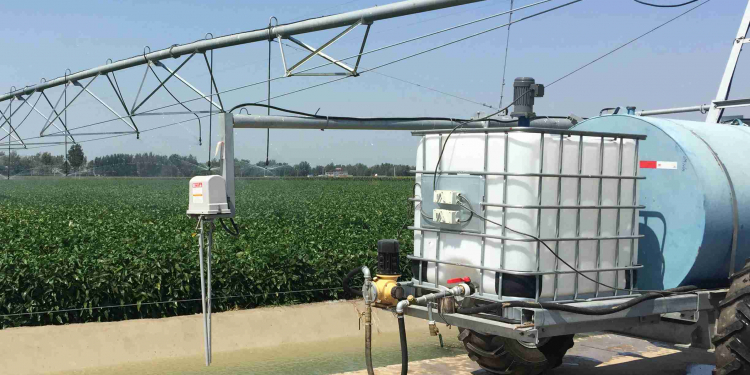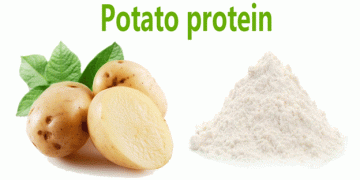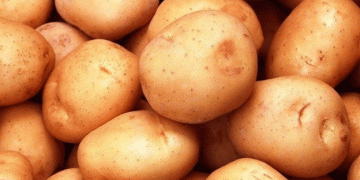Every farmer wants to see their crops grow healthily, develop fully, and yield properly in both quantity and quality. To achieve all this, crop plants must have enough of every essential nutrient they need readily available in the soil. A plant that lacks any essential nutrient cannot thrive: the seed may not germinate; the plant may not be able to develop good roots, stems, leaves, flowers or fruits. In extreme cases of nutrient deficiency, the plant will die.
Scientists have identified seventeen essential nutrients to plants. The three main nutrients are nitrogen (N), phosphorus (P) and potassium (K). Together they make up the trio known as NPK. Other important nutrients include calcium (Ca), magnesium (Mg) and sulfur (S). Plants also need small quantities of iron (Fe), manganese (Mn), zinc (Zn), copper (Cu), boron (B), chloride (Cl) and molybdenum (Mo). These are known as micronutrient elements because only small amounts are needed by the growing plant.
Fueling soil fertility
Essential nutrients are mainly taken up by plant roots. While soil naturally contains many nutrients, these soil nutrient reserves can become depleted. Farming year after year without adequately replenishing nutrients results in a downward spiral of soil fertility. Crop yields decline, food insecurity increases, and environmental degradation is more likely.
Farmers usually apply plenty of N and P but often neglect to pay enough attention to other nutrients. This leads to nutrient imbalances and deficiencies. All the nutrients removed with every harvest must be replenished through fertilizers, manures, cover crops, etc. (integrated nutrient management) in order to sustain crop production.
Intensive agriculture (sometimes as many as three crops per year from the same soil) requires a judicious nutrient management strategy to optimize the supply, efficiency and value for money of the fertility inputs.
Balanced fertilization, the key for sustainable crop production
The business benefits of balanced fertilization of crops are obvious: with higher yields the farmer makes more profit, with better crop quality the produce is more in demand and may attract a premium price, and with better crop health and resistance to pests and diseases the other costs of production such as pesticides are reduced.
There are benefits beyond the farm as well. Higher farm incomes enable business expansion and creation of more jobs and thus contribute to the development of the whole rural economy. At a national level, the whole country benefits from more robust food security, less dependency on food imports and even the opening up of food export opportunities.
Sharing the science of investing in crop nutrition
There is a need to convince farmers to invest in their soil’s fertility. Farmers need to be encouraged to prioritize not only N and P, but also to apply K and other nutrients. In South Asia, Africa and other regions of the world there is rising incidence of deficiencies of K as well as other nutrients in soil due to unbalanced fertilizer use. As soil fertility degrades, farmers are losing the basis for sustained production and income.
Understanding of crop nutrition needs to be expanded. It is indeed often difficult to visualize the effect of potassium and other nutrients, but this should not prevent us from demonstrating the positive effects of balanced fertilization on yield, quality and stress tolerance in the crops in farmers’ fields.
Balanced multi-nutrient supply to crops with Polysulphate
Fortunately, there are efficient and effective fertilizer solutions available to farmers. Polysulphate is a multi-nutrient fertilizer that contains four nutrients, namely sulphur, potassium, magnesium and calcium. It contains 48% SO3 (19.2% S), 14% K2O (11.6% K), 6% MgO (3.6% Mg) and 17% CaO (12.2% Ca), all in sulphate form, with all these nutrients fully available to plants. As well as having a low salt index and a neutral pH it has chloride content that is very low, enabling it to be applied to sensitive crops.
Polysulphate is derived from a mineral called polyhalite, mined in the UK. Being a natural crystal, it has a unique dissolution pattern which means that it releases nutrients gradually after being applied to the soil. Gradual nutrient release reduces the chance of fertilizer being leached (lost from the soil) with rainfall and being an environmental problem. The prolonged availability of nutrients perfectly matches the timing and quantity of nutrients required by a wide range of crops.
Additional benefits of Polysulphate include: a low carbon footprint; it delivers dependable high value with low negative environmental impact; and it is certified for organic use. To farmers, the balanced nutrition from Polysulphate provides higher yields as shown in this example of tomato production in Henan, China, comparing different fertilizer practices.
Polysulphate guarantees more complete and efficient fertilization, even in the most nutrient-demanding crops that extract a great deal from the soil. These include irrigated crops such as corn, potatoes, beets, cotton or high-productivity winter cereals such as strong wheat. Vegetable crops and orchard trees also benefit from Polysulphate application in many ways: produce has better color, bigger size, less defects and longer shelf life, as shown in this example of a pineapple trial in Malaysia.
Fertilizers fundamental to global food security
Fertilizers play a critical role in the world’s food security. Ensuring that every crop plant has access to an adequate supply of each essential nutrient at every growth stage, with no over or under-supply, would make the world of difference to global food supplies and farmer incomes.
Targeted, balanced and precise crop nutrition – with K, S, Ca and Mg nutrients and gradual and prolonged release of adequate S – is one of the keys to unlocking crop performance and achieving both crop productivity and profitability. It is something that farmers – and consumers – everywhere would like to see.






